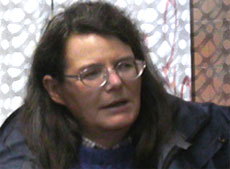The Vietnam Museum of Ethnology is showcasing the works of Australian artist Clare Martin in a new exhibition, including sculptures, photographs and writings.

With the theme of Notes on an Imaginary Culture, this is Martin's third exhibition in Vietnam and her second at the museum.
As an artist rather than an ethnographer, Martin has tried to imagine a journey of discovery in which she would find an unknown ethnic group, conceiving of their new and strange customs and then representing them through her work.
Her ideas were adapted from scientific disciplines and images, including archaeology, anatomy, botany and museum collections, and the installation focuses on the way museums transform the meaning, interpretation and aesthetics of the objects displayed.
Martin said she wanted visitors to join her in imagining the culture of an unknown tribe called the Od.
Her sculptures are made from aluminum cans and other recycled materials, because she "found" that her ethnic group used a lot of such things, she said. They continued to live on agriculture, with farming a large part of their lives.
"Why should we admire this culture?" Martin asked. "They are living scatteredly, not close to each other, but they have a strong sense of community. These people are very inventive and show great ability to make useful things from whatever available material. They also have a very good sense of humour," she said. "Let's hope they survive."
Martin first visited Vietnam in 1991 and took part in the Hue Sculpture Symposium in 2006 and 2008. She has also mounted an exhibition in Australia reflecting her experiences of Vietnamese culture, entitled Screening the Buddha.
Developing the works in the current exhibition during an artist's residency at the Museum of Ethnology in 2008, Martin said she was influenced by a visiting exhibition from the Musee Orsay about the French ethnographer Condominas, called We Have Eaten the Forest. Of special significance to her was the use of reproductions from Condominas's notebooks, including small sketches and diagrams, similar to an artist's sketchbook.
She was also influenced by the book “A Contribution to Understanding Katu Culture†by Luu Anh Hung because it demonstrated so clearly the task of the ethnographer, she said.
"I'm fascinated with the stories about the lives of the Od and want to discover more about their customs and culture," said a Vietnamese visitor to the museum. "They are as interesting and lively as if they were real."
The exhibition is being sponsored by the Australian Embassy in Hanoi and Australian Ambassador in Vietnam Allaster Cox said no place was better suited to Martin's exhibition on the Od than the Vietnam Museum of Ethnology. The exhibition will continue at the museum, on Nguyen Van Huyen Street, Hanoi, through April 16.